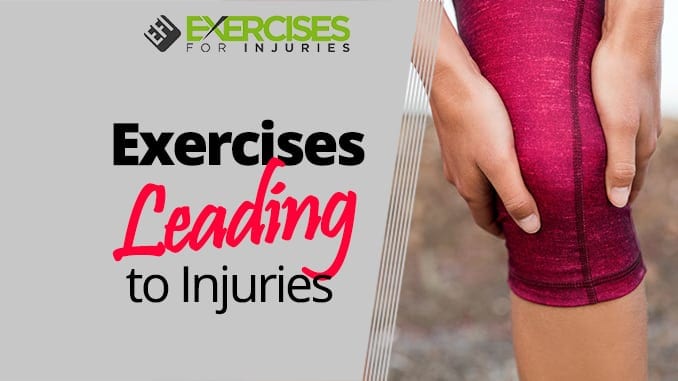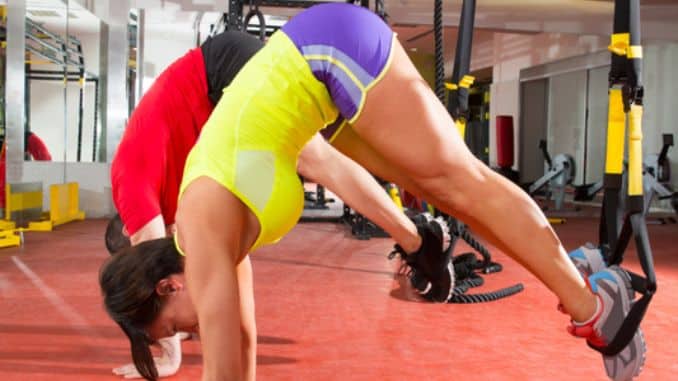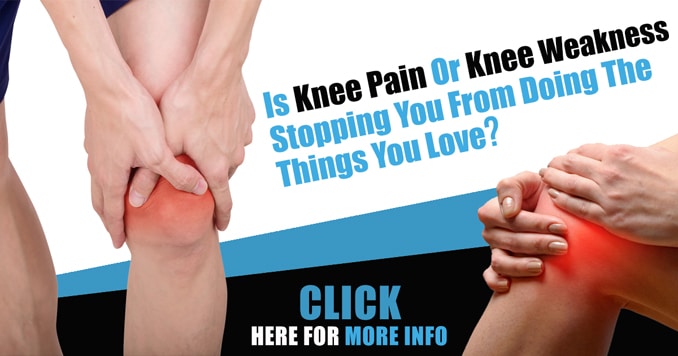
We focus on exercises that lead to injury if performed incorrectly or without suitable preparation and conditioning.
I am coming to you from the home of Rambo.
The little town of Hope, BC, Canada, was the backdrop of the first Rambo movie.
The visitor center has one of those signs where you can put your head in it and look like Rambo.
Fun.
Let’s get to the question and answers.
This Q&A thing has gotten popular.
Since I started it, I have gotten more and more questions, which is excellent.
Let’s get to the questions.
Knee Cysts and I Can’t Walk.
I was hoping you had any programs to help with ganglion cysts in the knees.
I have one in my left knee for sure (mri) and think i have one in my right also.
I have terrible insurance and waiting for an appointment to the orthopedic doctor. This is something I know little about and I havent walked in a month.
Is there any programs you have to help after I get them drained, hopefully. Never before this have I had knee problems. Thanks for any help.
– Steve
My heart aches when I get emails like this.
I am working on creating more and more exercise programs for various exercises, but I am unsure if I will make one for knee cysts.
Steve, here is my advice to you:
Do Your Homework – Spend time searching the internet, going to the library, and talking with friends. Get as much information as possible about your injury and what you can do about it. This will clear away the hopelessness, give you a clear idea of what is going on, and show you what you need to do.
Fight Inflammation – To decrease inflammation, you must look at your sleep, nutrition, vitamins, and food. You can get some ideas on what you can do here.
Keep Moving – This will help with inflammation and recovery. Look at the articles where I talk about terminal knee flexion and extension.
Keep battling, Steve, and don’t let your injury beat you. Keep fighting.
Kind Words
I have invested in your muscle imbalance product and the information is beyond its time. I have learned so much from that product.
Your influence on the fitness industry has been significant.
Your passion and commitment to help others and improve the fitness industry is contagious. You inspire people such as myself to pursue greatness and to continue on with your work to help the future generations.
Thank you Rick, you have helped me so much.
Otis C
Otis, thank you for the kind words.
I am not sure what to say.
The only advice I can give you is to find your passion and live your passion.
Before I got to my 20s, I didn’t know what I wanted to do. In my 20s, I tried it all regarding work and areas of specialization in fitness & health. In my 30s, I had to accept that I love injuries and overcoming injuries with exercise—a strange problem. There is no medical diagnosis in the literature yet, but maybe they will call it the “Kaselj Syndrome.”
Now, I focus on helping professionals and clients when it comes to overcoming exercises leading to injuries. Other people in the industry think I am crazy with my work, but it looks like it is helping.
Thanks once again, Otis.
Exercises Leading to Injuries
Thanks Rick and Dr Steve.
Really good advice.
One of the classes I teach is Bodybalance and they use this sequence a lot .
Several class members have said this move has made their back hurt afterwards.
I will be teaching this very differently for my other classes and clients but I feel I have an obligation to inform Bodybalance class members also of the injury risk if not performed correctly.
I wonder if Les Mills is aware of the risks in class for those not ready for this move?
Jayne A
Jayne, I enjoyed the article from Dr. Young, and its timing was fitting.
Just that day, I was experiencing what he talked about.
If you do personal or direct one-on-one client training, you need to match the exercise to the movement level they can handle with the practice you get them to do. This is why no exercise method is bad or wrong.
For example, I like machines. They are great for injuries, introducing movements to beginners and older adults in the gym.
A challenge I find, which relates to Less Mills, is an exercise program that is good for everyone. There are no “personal” or modifications in many group settings, which leads to injuries. I have experienced this with my undercover work.
Jayne, excellent work on continuing to learn and doing all you can to help your clients.
Why Can’t You Solve Your Knee Injury?
Rick,
Why are you going to some other practitioner when you publish the knee injury solution advertising it as a fix all for all conditions?
Yan
The reason why I got someone to look at my knee was to ease my mind.
I did a self-assessment of my knee and had a good idea of what was going on. When the pain continues, and you get sharp jabbing pain when you do specific movements, you wonder if it is something else.
So, I went to get a second opinion to put my mind at ease and focus on recovery.
How come my previous comments were erased?
I’m wondering why you need to get someone else to assess your knee when you market and advertise a product that claims to solve all knee problems?
I think it’s a legitimate question.
I have another question: what is a “static” movement?
Dennis
Dennis, not sure what your last comment was. Sorry, it got deleted.
I think I answered your second question above.
Now to your third question. I call a bilateral squat a “static” movement. This is important, but looking at a static squat is essential for getting out of a chair or off the toilet. We need to look at dynamic movements, like, walking.
Hello member of the support staff,
A quick question. In his last email, Rick mentioned that he went to a professional for a knee assessment and therapy.
He was not happy with the results.
I wondered why Rick chose to go to another professional for his knee problem (as he mentioned in his last email) since he knows this field himself and is in close personal contact with many colleagues who do that as well.
(This addresses a concern I have as to the scope of personal trainers, even those like myself who have a Master’s Degree in Exercise Physiology, regarding assessment and rehab for injuries.)
Thank you.
Randy B
Randy, I answered your first question above.
With the concerns about the scope of practice, my response is simple:
- Get medical approval to start an exercise program if a client has an injury.
- Get exercise guidelines from the individual that provided the medical clearance.
- When in doubt, refer to a professional that can help your client.
- Please do everything you can to improve movement for your client and their injury. This would include a range of motion, strength, stability, etc.
That is my take on the scope of practice.
Thank you, everyone, for your questions. It was fun to answer them.
If you have a question, post it up as a comment on the blog or email [email protected].
That is it; I am off to do some learning.
Rick Kaselj, MS



